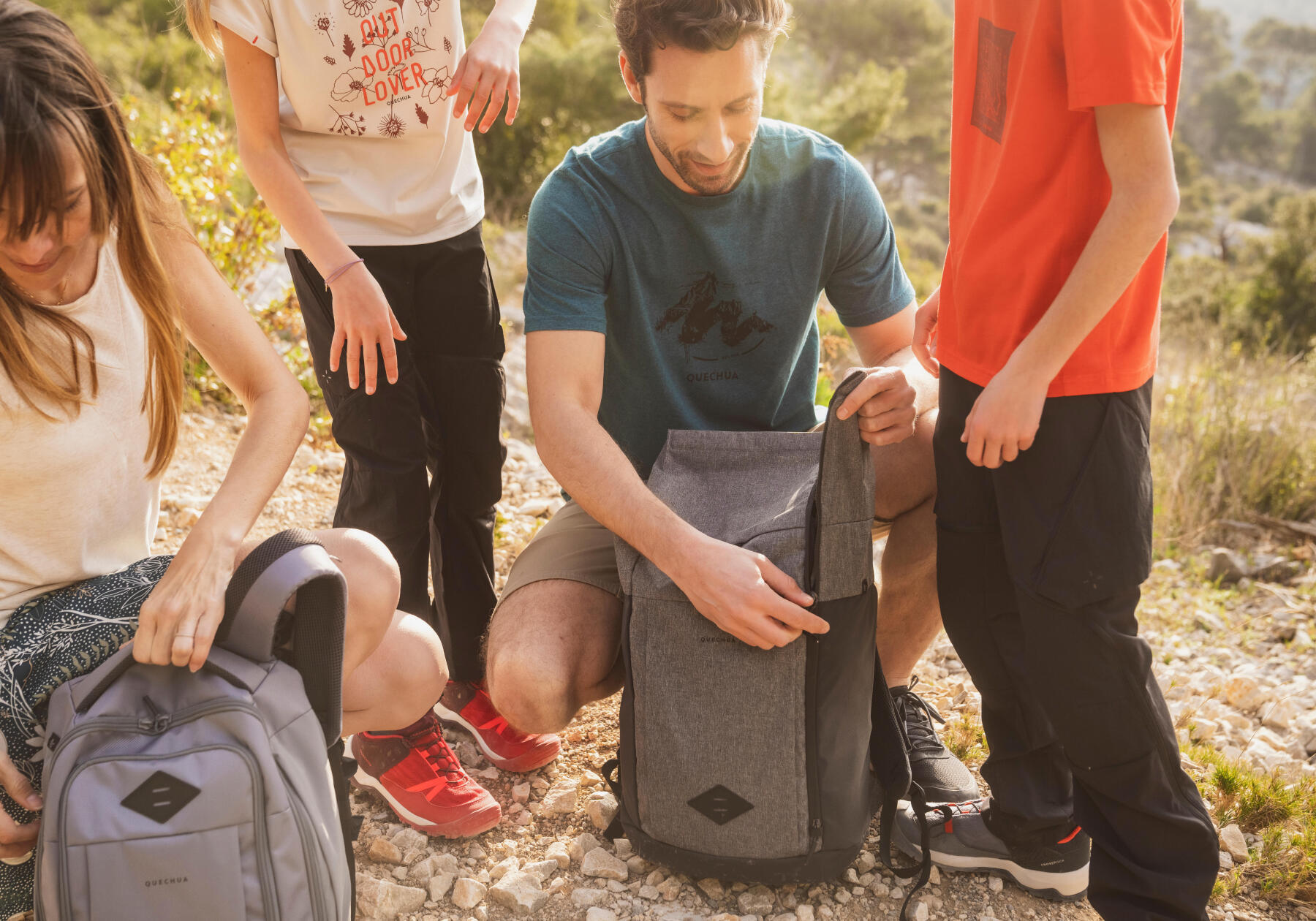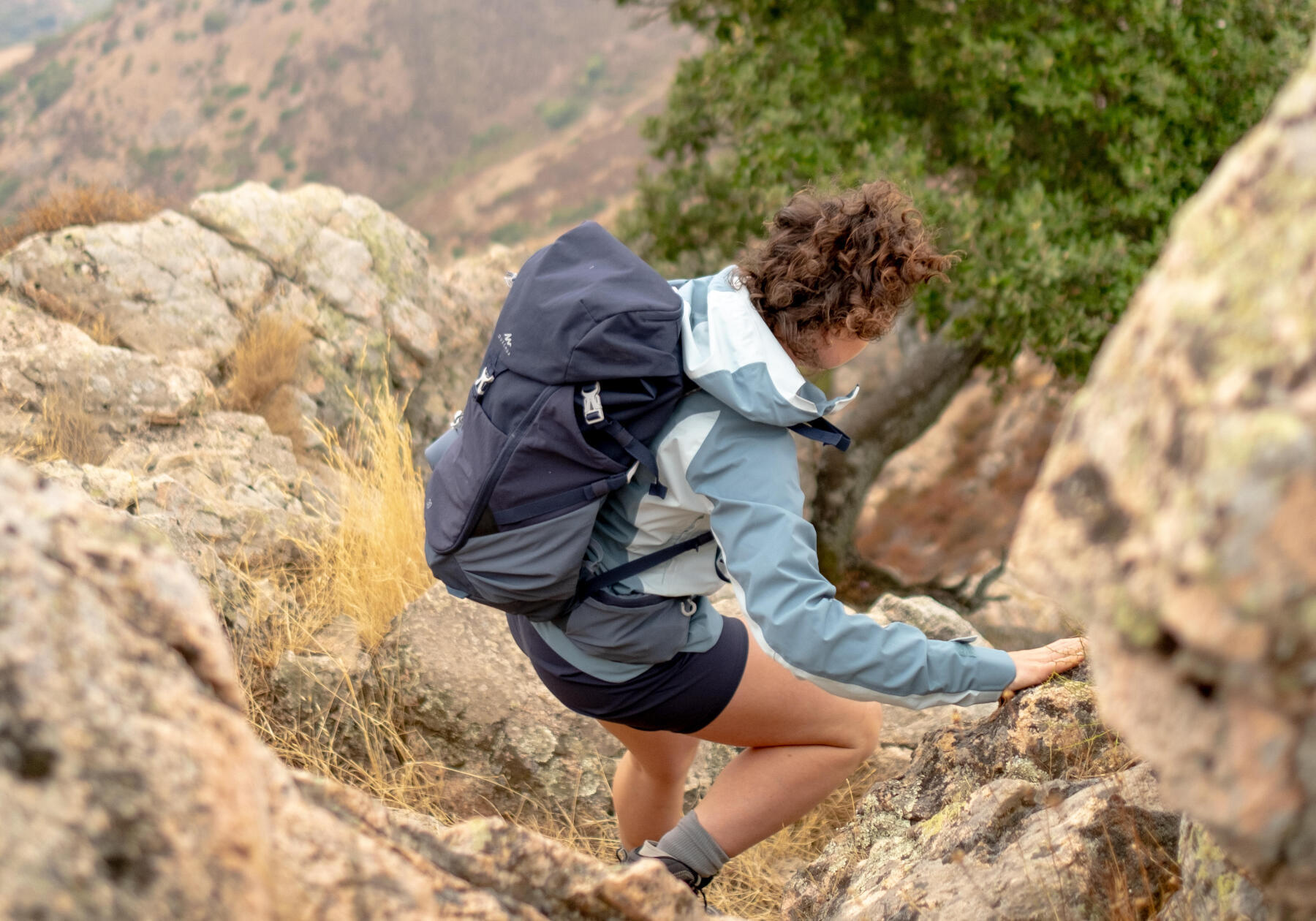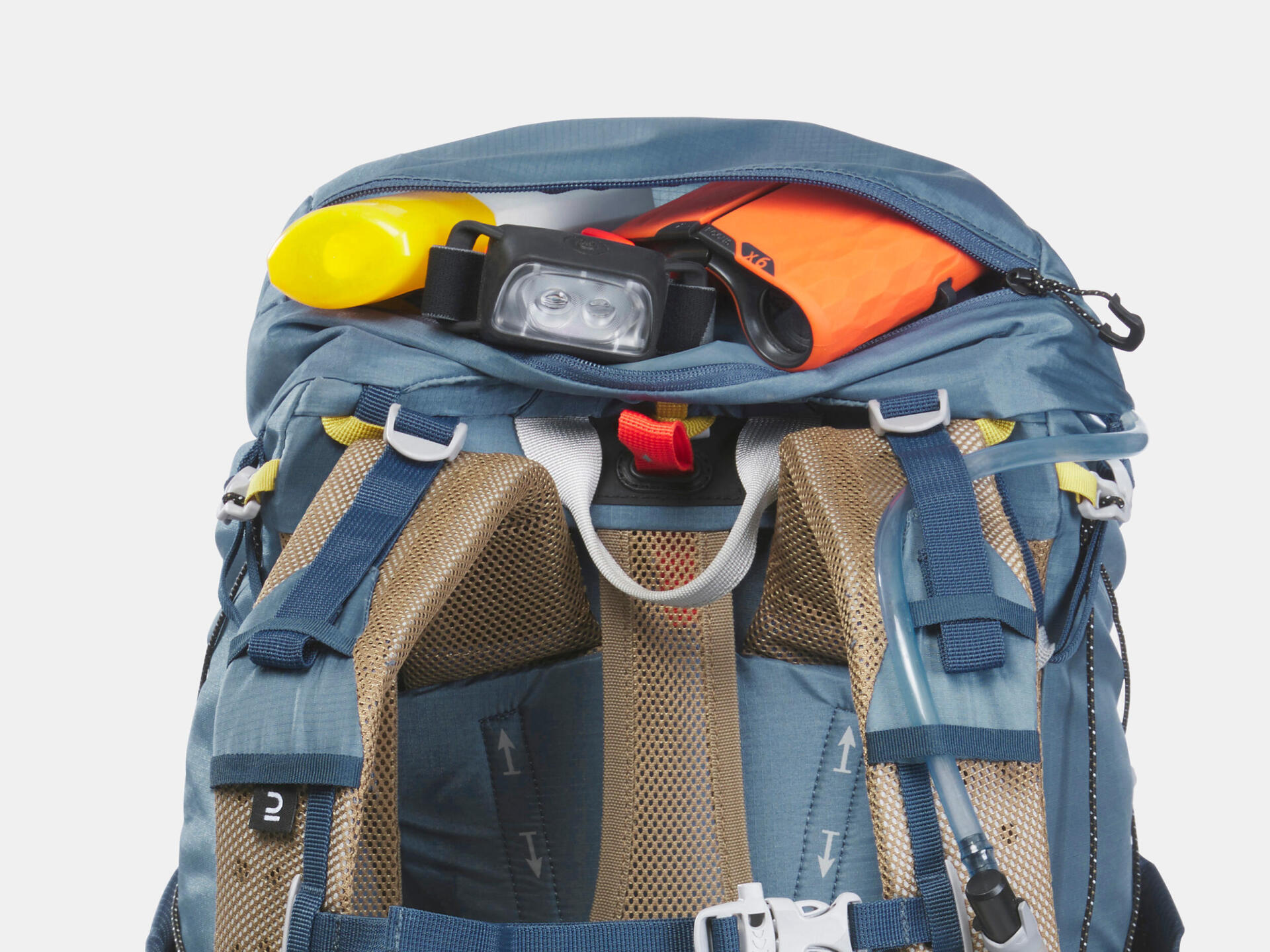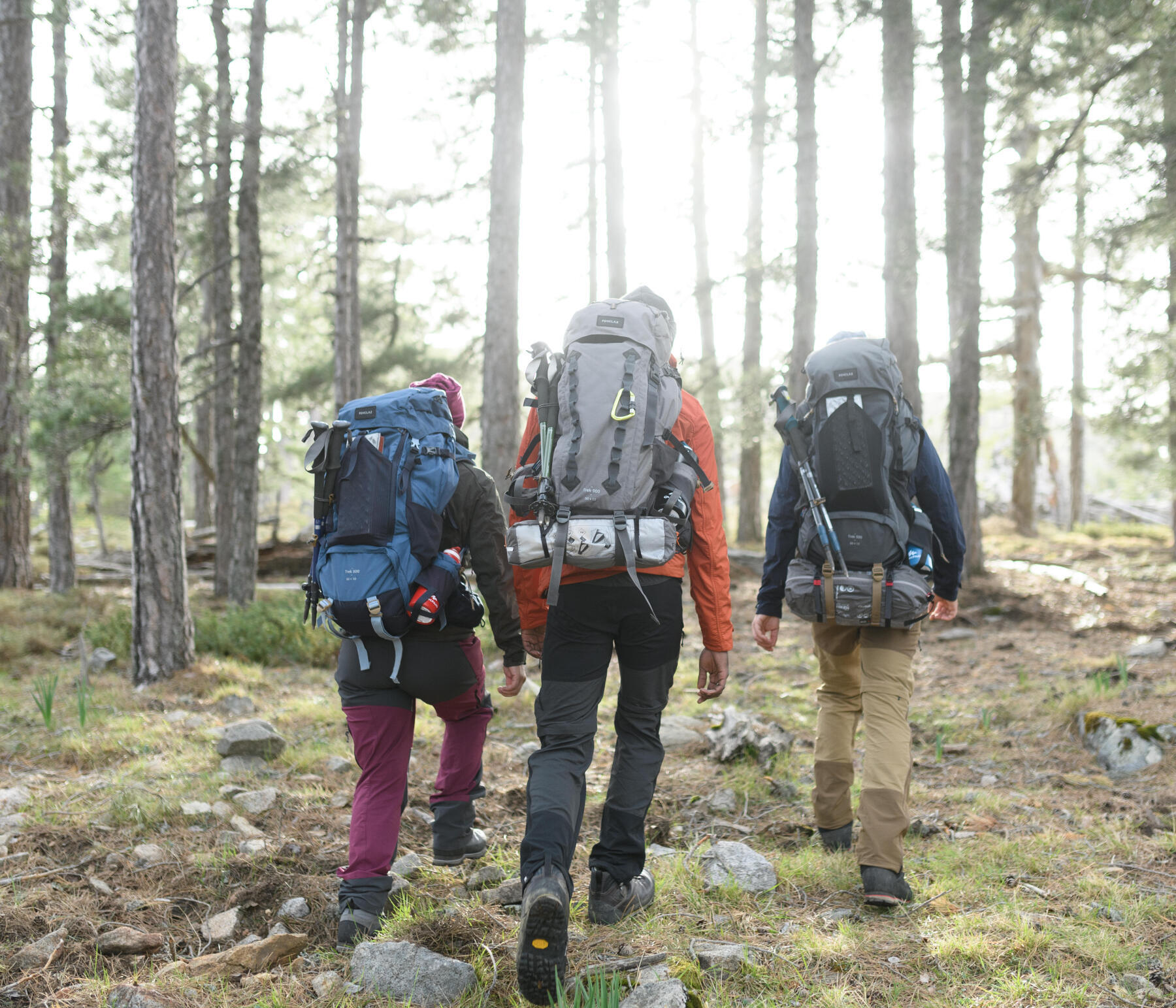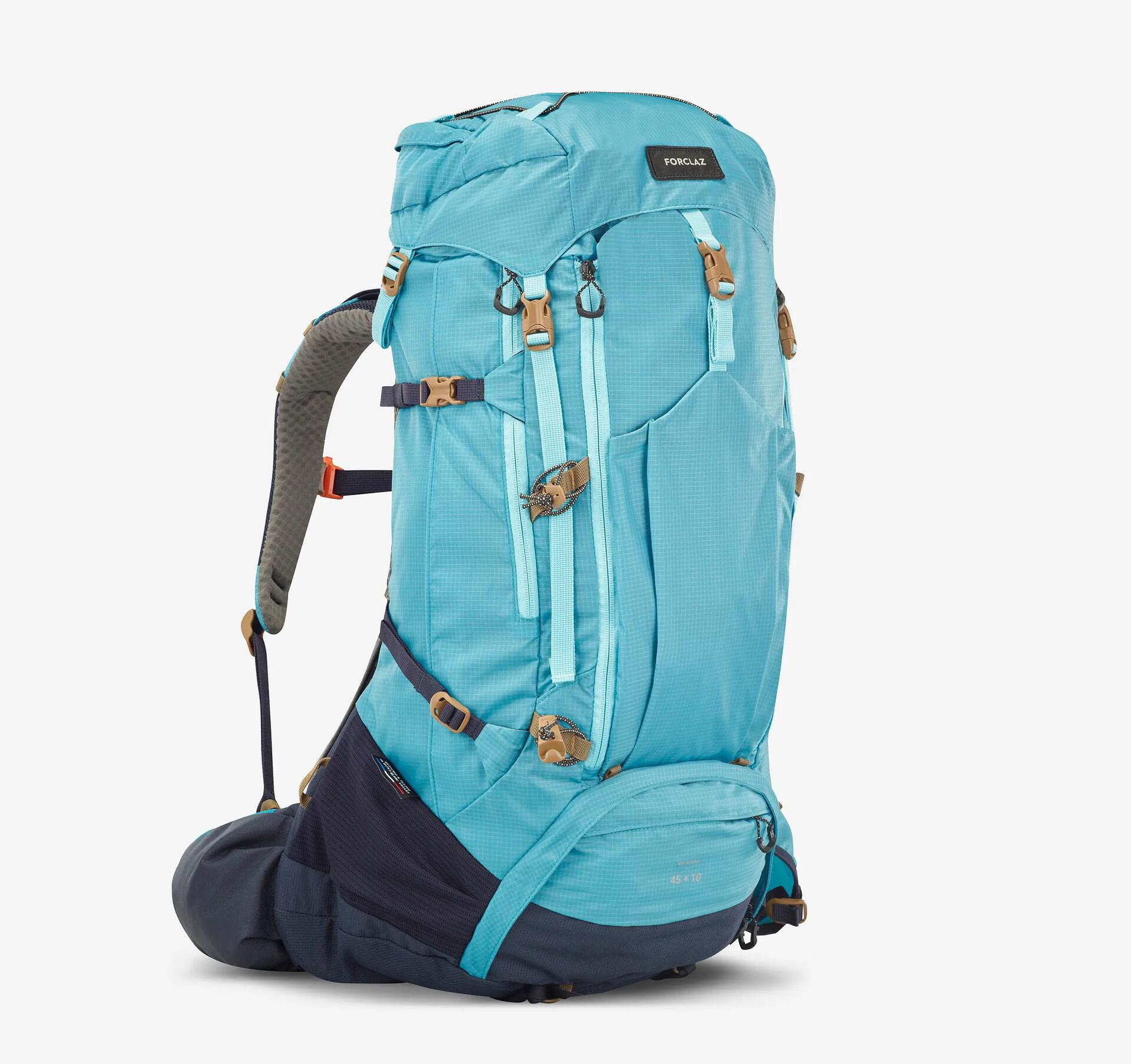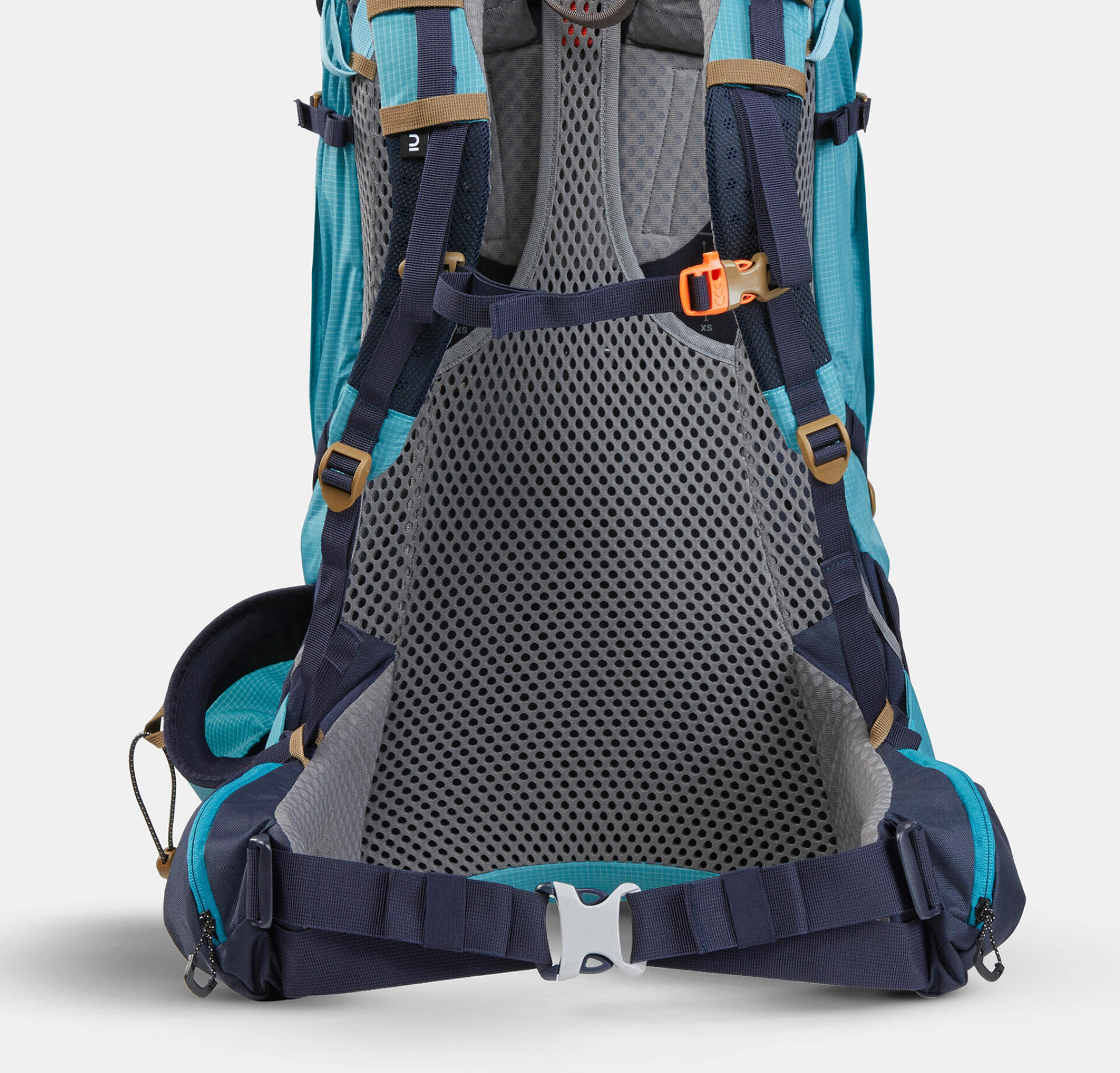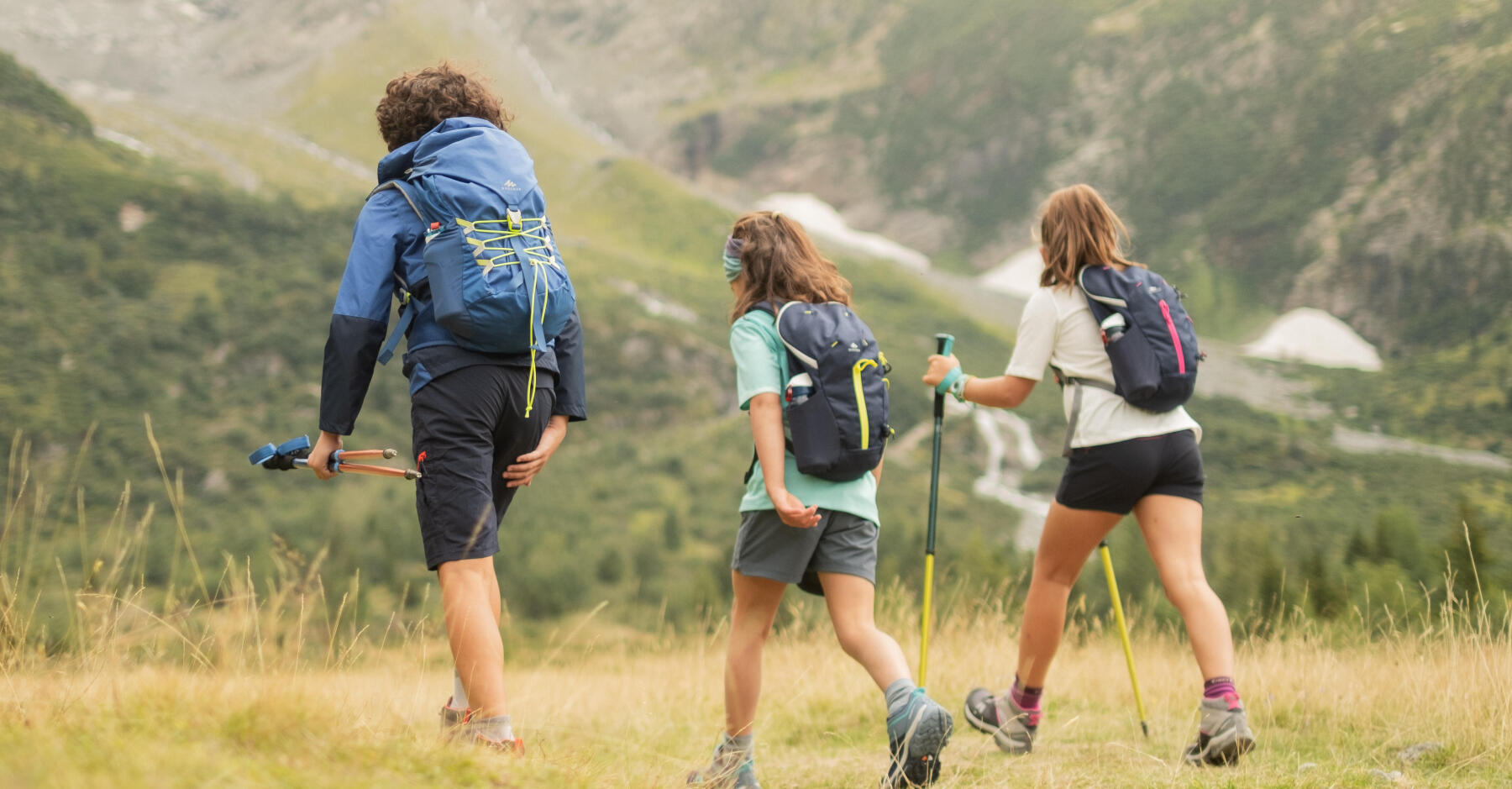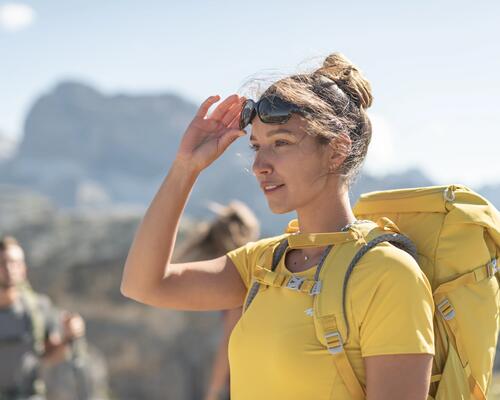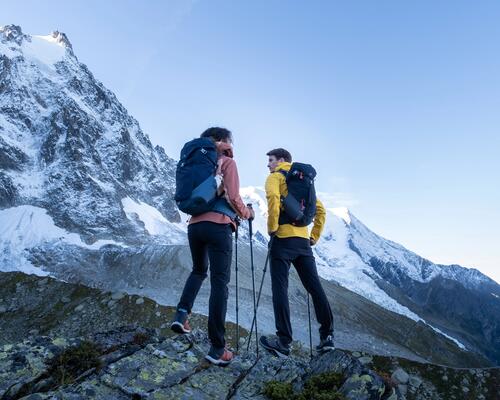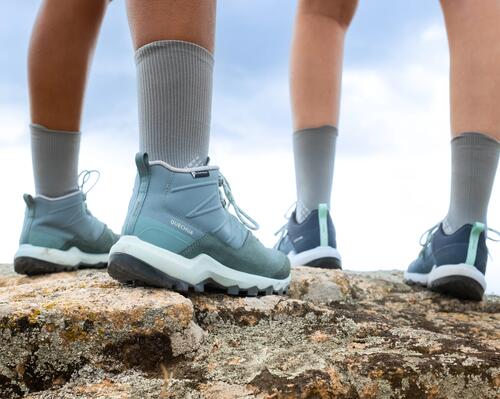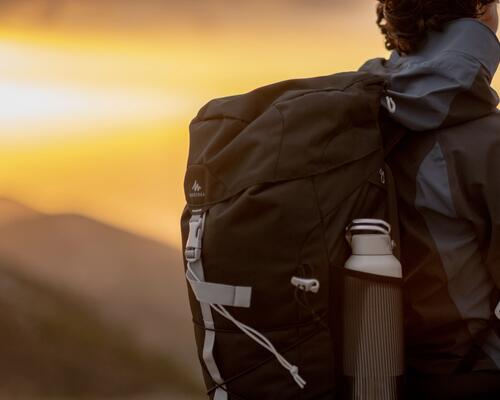Which bag for a 5-day trek?
For a 5-day trek, you’ll need a medium to large backpack, between 40 and 80 litres. A backpack of this size lets you carry all the things you need for your trek, such as a tent, a sleeping bag, food, a change of clothes, etc.
It’s also important to choose a backpack that is water resistant, especially if you plan to trek in areas where there may be bad weather. Choose a backpack with a rain cover or one made of waterproof material to protect your belongings in bad weather.
Finally, if you plan to carry your backpack for long hours, it can be handy to have a built-in hydration system (a pocket for a water bottle or a hose system). This will help you drink easily without having to take your water bottle out of your backpack.


